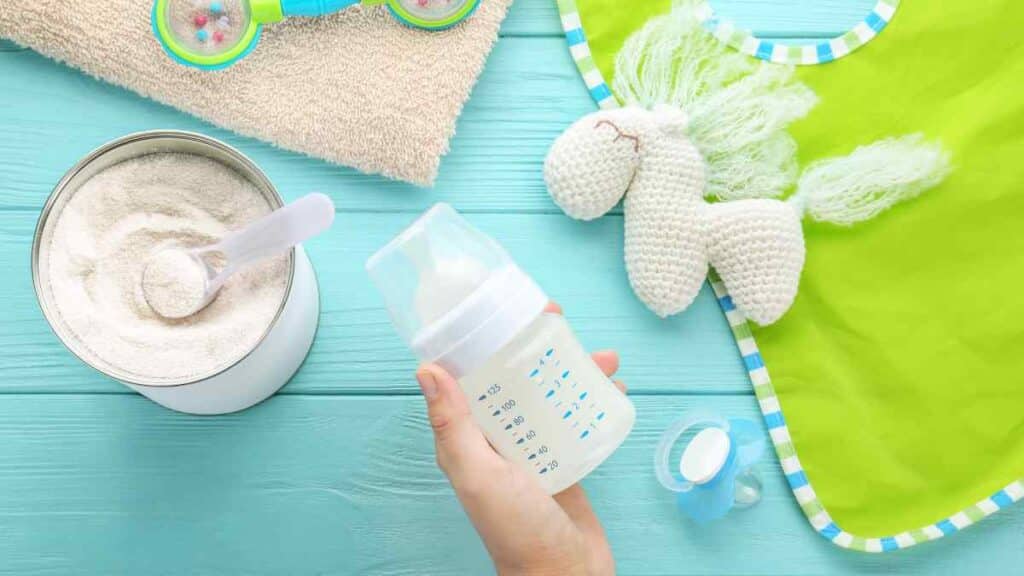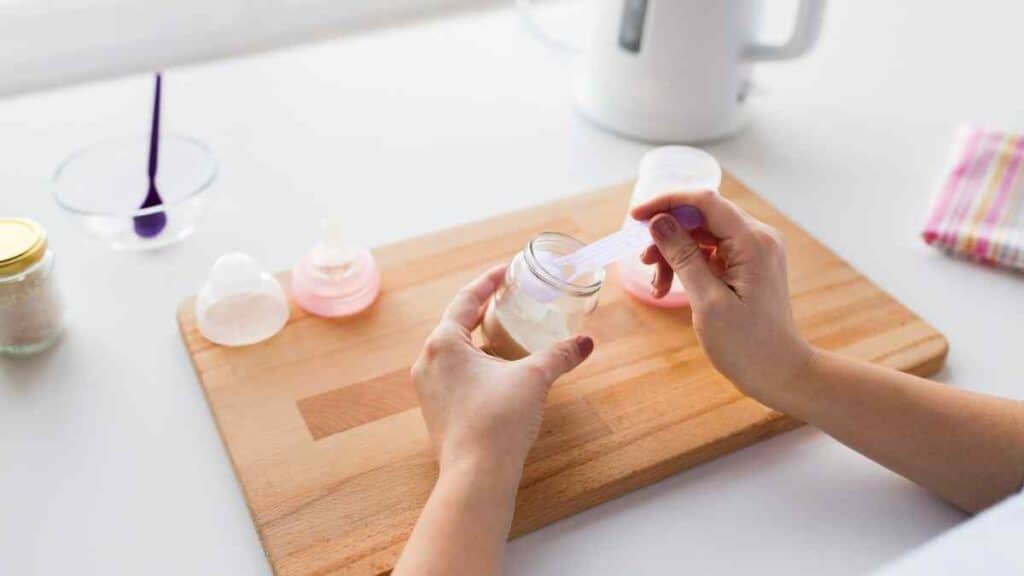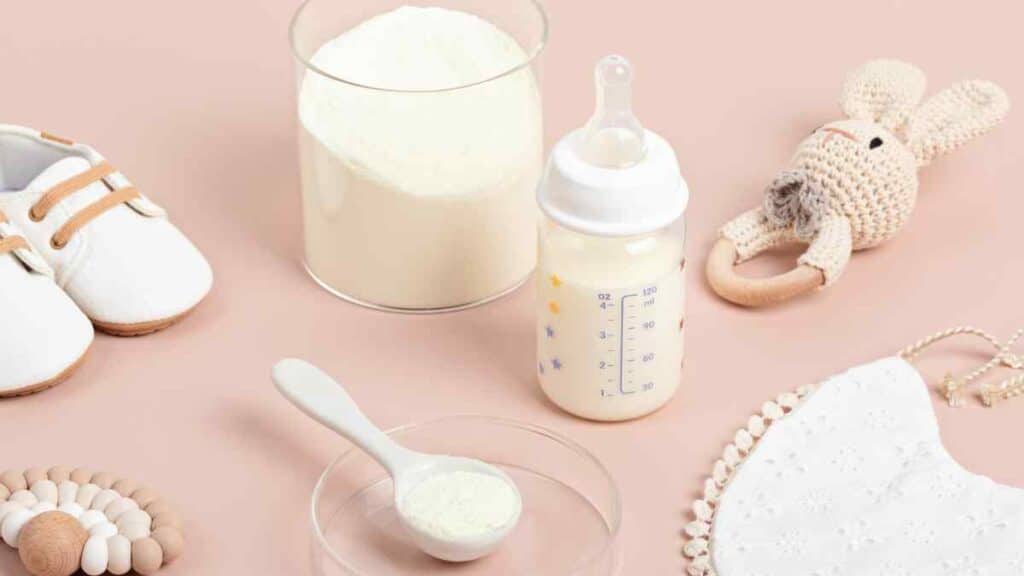Welcoming a new baby into the world is a joyous and momentous occasion, but it also comes with a plethora of questions and concerns for new parents. One of the most crucial aspects of caring for an infant is ensuring they receive proper nutrition.
This article aims to help parents and caregivers navigate the complexities of preparing baby formula with confidence and ease. We will explore the importance of using the right type of water, discuss the various formula options available, and provide step-by-step instructions on how to mix and prepare a safe and nutritious bottle for your little one.
By the end of this comprehensive guide, you will be well-equipped to make informed decisions and provide your baby with the nourishment they need to thrive.

Basic Types of Baby Formula
Navigating the world of infant formula can feel like a daunting task. With so many options available, it’s essential to understand the basic types of baby formula and how to prepare them correctly. This column will guide you through the world of infant formula and help you make an informed decision for your little one’s nutrition.
Powder Formula
Powdered infant formula is the most common and affordable option available. It comes in a dry, powdered form and needs to be mixed with water before feeding [1]. To prepare the powdered formula, follow the manufacturer’s instructions for the correct water ratio to the powder. Use hot water (at least 158°F or 70°C) to kill any harmful bacteria that may be present in the formula. Always allow the hot water to cool down before mixing it with the powdered formula, as this will help prevent the growth of bacteria.
Concentrated Liquid Formula
This type of infant formula comes in a liquid concentrate that must be diluted with water before feeding. To mix the concentrated liquid formula, follow the manufacturer’s instructions for the correct ratio of water to concentrate. As with powdered formula, it’s essential to use hot water when preparing infant formula to ensure any potential bacteria are killed.
Ready-to-Feed Formula
Ready-to-feed formula is the most convenient option, as it comes pre-mixed and requires no additional preparation. This type of formula is ideal for parents who are on-the-go or prefer not to mix formula themselves. While the ready-to-feed formula is typically more expensive than powdered or concentrated liquid formula, it offers quick and easy use.
When preparing infant formula, it’s essential to follow the American Academy of Pediatrics‘ recommendations for safe formula preparation. This includes using hot water to kill bacteria, measuring the water and formula accurately, and discarding any unused formula after feeding to prevent bacterial growth.
It’s also important to consider the type of water you’re using when mixing the formula. Tap water can sometimes contain too much fluoride, which can lead to dental fluorosis in infants. To ensure your baby is receiving the appropriate amount of fluoride, consult your local health department or pediatrician for advice on the best water source for preparing infant formula. Bottled water may be recommended, but it’s essential to choose a low-fluoride option to avoid overexposure.
How to Choose Infant Formula
As new parents, you may find yourselves overwhelmed with the myriad of choices and responsibilities that come with caring for your little one. One such important decision is selecting the right infant formula. Let’s help you understand the various types of infant formula and offer tips on how to safely prepare baby formula for your precious bundle of joy.
Know Your Options
Infant formulas come in three main types: powdered infant formula, concentrated liquid formula, and ready-to-feed formula. Powdered formula is the most common and affordable option, but it requires mixing with water. A concentrated liquid formula also needs to be diluted with water, while ready-to-feed formula is the most convenient option, as it comes pre-mixed and requires no additional preparation.
Consult Your Local Health Department
Your local health department can provide information on the safety of your tap water for mixing formula. If your tap water is safe, you can use it to mix the formula after running it through a faucet filter or boiling it to kill any potential contaminants. If your tap water is not suitable, the American Academy of Pediatrics (AAP) recommends using low-fluoride bottled water for preparing formula.

Safely Prepare Baby Formula
When preparing powdered or concentrated liquid formula, ensure you follow the manufacturer’s instructions carefully. Use hot water (at least 158°F or 70°C) to kill any harmful bacteria in the powdered formula. Allow the hot water to cool down before mixing it with the powdered or liquid concentrate formula. Always measure the water and formula carefully to ensure the correct consistency.
Keep it Clean
Wash your hands thoroughly before handling your baby’s bottle, and ensure that all bottle parts are clean and sterilized before use. This is especially important for infants with a weakened immune system, as they may be more susceptible to infections.
Warm the Formula
Some babies prefer warm formula, while others are content with room temperature or cold formula. If your baby prefers warm formula, you can place the prepared bottle in a container of warm water or use a bottle warmer. Never use a microwave to heat the formula, as it can create hot spots that can burn your baby’s mouth.
Test the Temperature
Before feeding your baby, test the formula’s temperature by placing a few drops on the inside of your wrist. It should feel warm but not hot. If the formula is too hot, allow it to cool down before offering it to your baby.
Discard Leftover Formula
Once your baby has finished feeding, discard any leftover formula in the bottle. Bacteria from your baby’s mouth can multiply quickly in the formula, making it unsafe for consumption.
Safely Preparing Baby Formula
Now that you have selected the best formula for your baby, it’s essential to learn how to prepare it to ensure your baby’s health and well-being safely. This column will guide you through the process of preparing baby formula, keeping disease control and safety at the forefront.
- Clean and sterilize: Before you start preparing your baby’s formula, ensure that you have properly cleaned and sterilized the baby bottle, nipple, and any other feeding equipment. This is a crucial step in maintaining disease control and ensuring a safe feeding environment.
- Boiling water: The water you use for preparing infant formula should be boiled to kill any harmful bacteria or contaminants. Bring the water to a rolling boil for at least one minute, then allow it to cool down to room or body temperature before using it for formula preparation. If you are in a hurry, you can place the boiled water in an ice bath to cool it down quickly.
- Measuring the formula: Whether you are using powdered or concentrated liquid formula, it’s essential to follow the instructions on the formula container for accurate measurements. Measure the formula powder or liquid concentrate using the provided scoop or measuring cup, and level it off to ensure you are using the correct amount.
- Mixing the formula: Once you have measured the correct amount of formula and water, mix them together in the baby bottle. For powdered formula, shake the bottle vigorously until the powder is fully dissolved. For concentrated formula, swirl the bottle gently to combine the liquid concentrate and water.
- Checking the formula temperature: It’s important to ensure that the prepared formula is at a safe and comfortable temperature for your baby. The formula should be at room temperature or body temperature before feeding. To check the formula temperature, place a few drops on the inside of your wrist; it should feel lukewarm, not hot or cold.
- Storing prepared formula: If you have prepared more formula than your baby can consume in a single feeding, store the leftover formula in the refrigerator for up to 24 hours. When it’s time for the next feeding, gently swirl the bottle to mix the formula and warm it by placing the bottle in a container of warm water. Do not use a microwave to heat the formula, as this can create hot spots that could burn your baby’s mouth.
- Extra precautions for premature babies: If your baby was born prematurely or has a weakened immune system, you might need to take extra precautions when preparing their formula. Consult your pediatrician for specific guidance on formula preparation and feeding for your baby’s unique needs.

Conclusion
Providing your baby with the right nutrition through proper mixing and preparation of infant formula is crucial for their growth and development. By understanding the different types of formula, choosing the appropriate baby water, and adhering to safe preparation practices, you can confidently nourish your little one and ensure their well-being.
As you navigate the world of baby water and formula, remember that your pediatrician is always an invaluable resource for guidance and support. With the right knowledge and a little practice, you’ll be well-equipped to handle the essential task of mixing and preparing baby formula, setting the stage for your baby’s health and happiness.
Let us know what you think of this article. Did it help you? Have a question? We’d love to hear from you!



